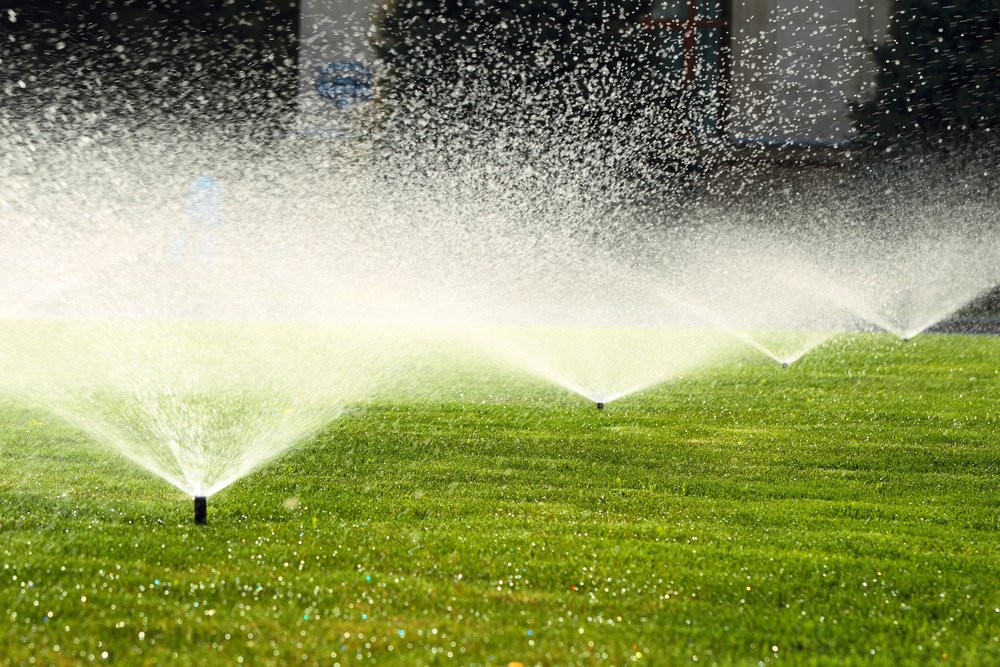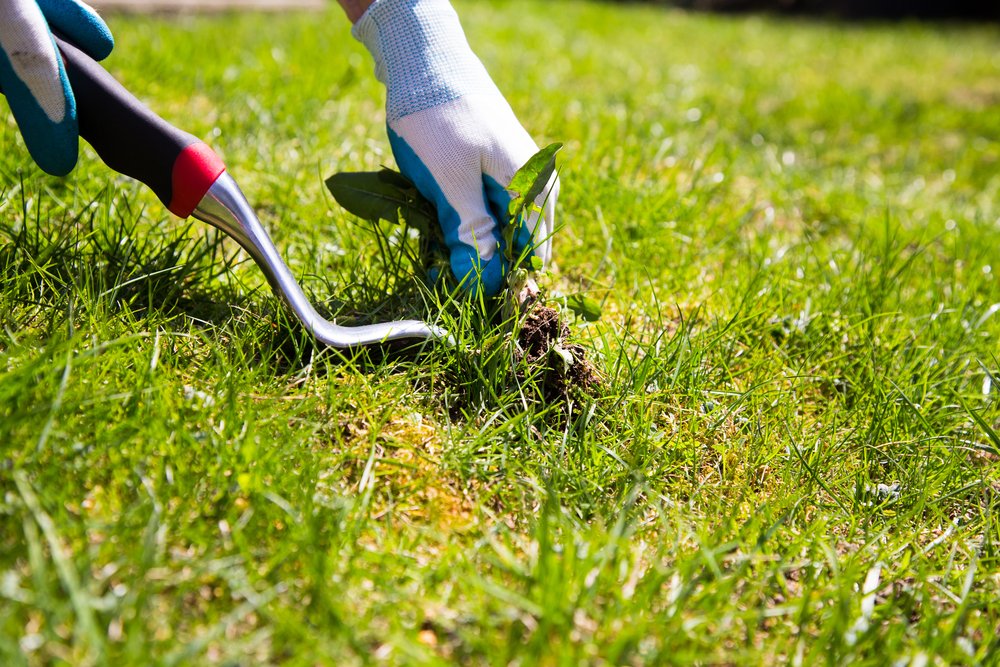Taking care of your lawn can be a challenging task, especially when there are so many myths and misconceptions surrounding proper lawn care. In this article, I aim to debunk some of the most common lawn care myths and provide you with scientific evidence to support the facts. By dispelling these misconceptions, you will be able to make informed decisions and achieve a lush, healthy lawn.
Myth #1: Watering your lawn every day is necessary

One of the most prevalent myths in lawn care is the belief that you need to water your lawn every day to keep it healthy. However, this couldn’t be further from the truth. Overwatering can actually be detrimental to your lawn’s health. When you water your lawn excessively, the roots become shallow and weak, making them more susceptible to disease and damage.
To ensure proper watering, it is recommended to water your lawn deeply but infrequently. This encourages the roots to grow deeper into the soil, resulting in a stronger and more resilient lawn. Depending on your climate and grass type, watering your lawn two to three times a week should be sufficient.
Myth #2: Grass should be mowed as short as possible
Many people believe that cutting the grass as short as possible will save them time and effort in the long run. However, this misconception can harm your lawn rather than benefit it. When you mow the grass too short, you expose the soil to the sun, which can lead to weed growth and increased water evaporation.
It is important to follow the one-third rule when mowing your lawn. This means that you should never remove more than one-third of the grass blade length at a time. By keeping the grass at a moderate height, you allow it to develop a stronger root system and better withstand stressors such as heat and drought.
Myth #3: Fertilizing your lawn with more is better
Fertilizing your lawn is essential for providing it with the necessary nutrients to thrive. However, the belief that using more fertilizer will result in a healthier lawn is a common misconception. In fact, over-fertilization can lead to several problems, including nutrient runoff, environmental pollution, and excessive growth.
To determine the right amount of fertilizer for your lawn, it is crucial to conduct a soil test. This will help identify the specific nutrient deficiencies and allow you to apply the appropriate fertilizer accordingly. Following the recommended application rates and schedules will ensure that your lawn receives the nutrients it needs without causing harm to the environment.
Myth #4: All weeds are harmful to your lawn

Weeds are often seen as the enemy of a beautiful lawn, but not all weeds are harmful. In fact, some weeds can actually benefit your lawn by improving soil health and providing habitat for beneficial insects. It is important to differentiate between invasive weeds that can choke out your grass and beneficial weeds that can coexist with your lawn.
Instead of resorting to chemical herbicides to get rid of all weeds, consider using integrated weed management techniques. This includes manual weed removal, proper lawn maintenance, and promoting a healthy turf through regular watering, mowing, and fertilization. By taking a more holistic approach to weed control, you can maintain a balance between a healthy lawn and beneficial plant diversity.
Myth #5: Using pesticides is the only solution for a healthy lawn
Many people believe that pesticides are the only solution for achieving a healthy and weed-free lawn. However, relying solely on pesticides can have negative consequences for both your lawn and the environment. Pesticides can harm beneficial insects, pollute water sources, and contribute to the development of pesticide-resistant weeds and pests.
Instead of relying on pesticides as a quick fix, consider adopting an integrated pest management (IPM) approach. This involves identifying the specific pests or diseases affecting your lawn and using targeted and environmentally-friendly solutions to control them. IPM focuses on prevention, monitoring, and cultural practices to maintain a healthy lawn without excessive reliance on chemical pesticides.
Debunking common lawn care myths with scientific evidence
It is important to debunk common lawn care myths with scientific evidence to ensure that you are making informed decisions for your lawn. Scientific studies and research provide valuable insights into proper lawn care practices and help dispel the misconceptions that have been perpetuated over the years.
For each of the myths discussed above, numerous scientific studies support the recommended practices. These studies have shown that deep, infrequent watering promotes stronger root growth, moderate grass height promotes healthier lawns, proper fertilization rates prevent nutrient runoff, integrated weed management techniques maintain a balance, and integrated pest management is a sustainable approach to lawn care.
Alternative practices for a healthy lawn
Now that we have debunked some common lawn care myths, it is important to explore alternative practices that promote a healthy lawn. These practices are based on scientific evidence and can help you achieve a lush and vibrant lawn without relying on misconceptions.
In addition to proper watering, mowing, fertilizing, and weed and pest control techniques, there are several other practices to consider. These include aerating your lawn to improve soil compaction, overseeding to fill in bare or thin areas, and practicing proper lawn maintenance such as regular dethatching and soil testing. By incorporating these practices into your lawn care routine, you can create an environment that is conducive to healthy grass growth.
Seeking professional advice for lawn care
While this article provides valuable information on debunking common lawn care myths, it is important to recognize that every lawn is unique. Factors such as grass type, climate, soil composition, and local regulations can all impact the care your lawn requires. Therefore, it is advisable to seek professional advice from a lawn care expert who can assess your specific needs and provide tailored recommendations.
A professional lawn care service can help you develop a customized lawn care plan based on your lawn’s unique characteristics. They have the expertise and knowledge to address any issues your lawn may be facing and provide effective solutions. By consulting with a professional, you can ensure that you are taking the right steps to achieve a healthy and beautiful lawn. There are also several DIY lawn care box services that take the guess work out of lawn care. They offer professional advice without the high price tag.
Conclusion: The importance of dispelling misconceptions for proper lawn care
In conclusion, debunking common lawn care myths is essential for achieving proper lawn care. By understanding the scientific evidence and adopting alternative practices, you can create a healthy and vibrant lawn. Remember to water deeply but infrequently, mow at a moderate height, fertilize according to soil test results, differentiate between harmful and beneficial weeds, and adopt integrated pest management strategies.
By dispelling these misconceptions and seeking professional advice when needed, you can ensure that your lawn receives the care it deserves. With proper lawn care practices in place, you can enjoy a beautiful, lush lawn that enhances the aesthetics of your home while also contributing to a healthier environment.
Now is the time to rethink your approach to lawn care and embrace the truth behind common myths. Your lawn will thank you for it!

